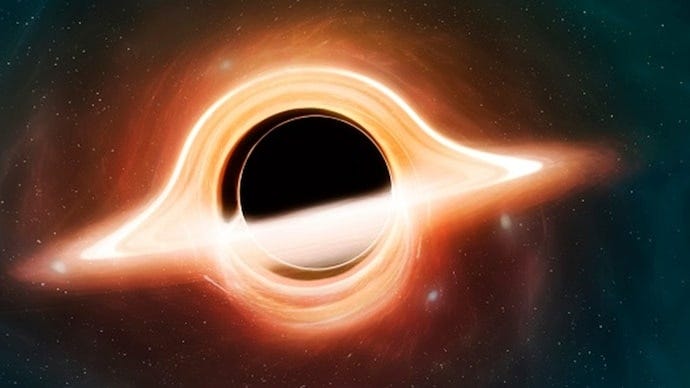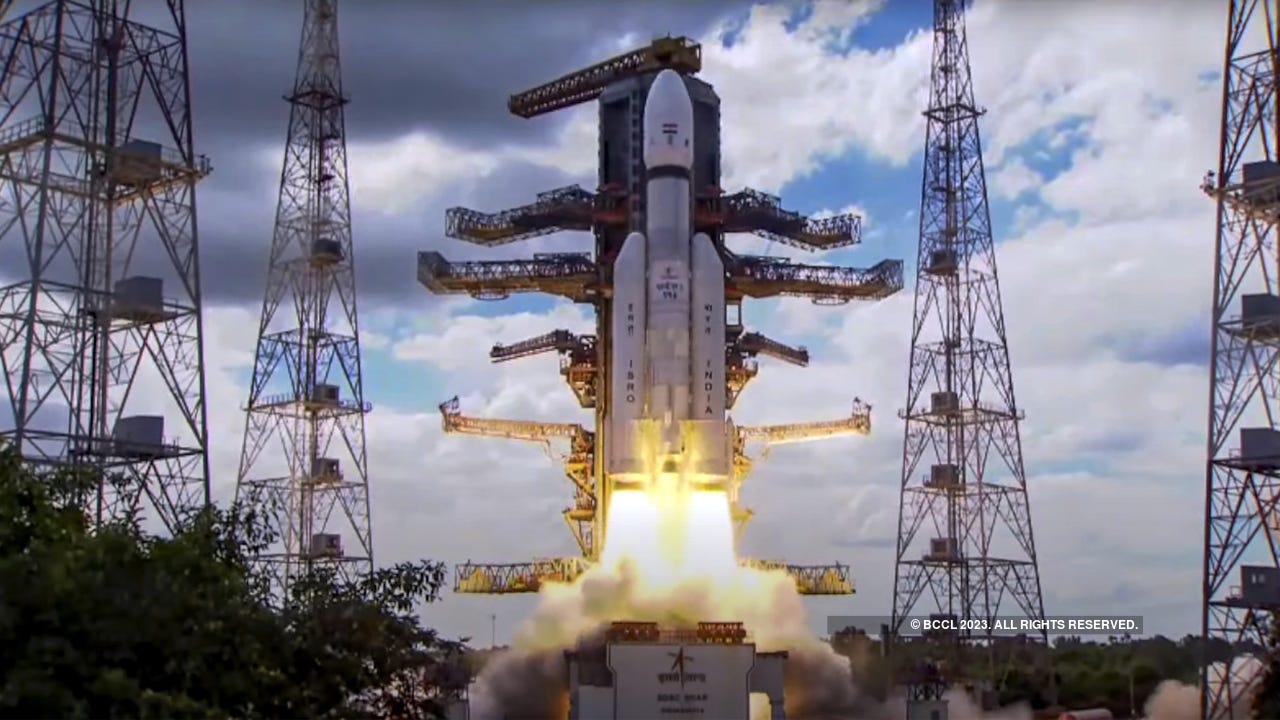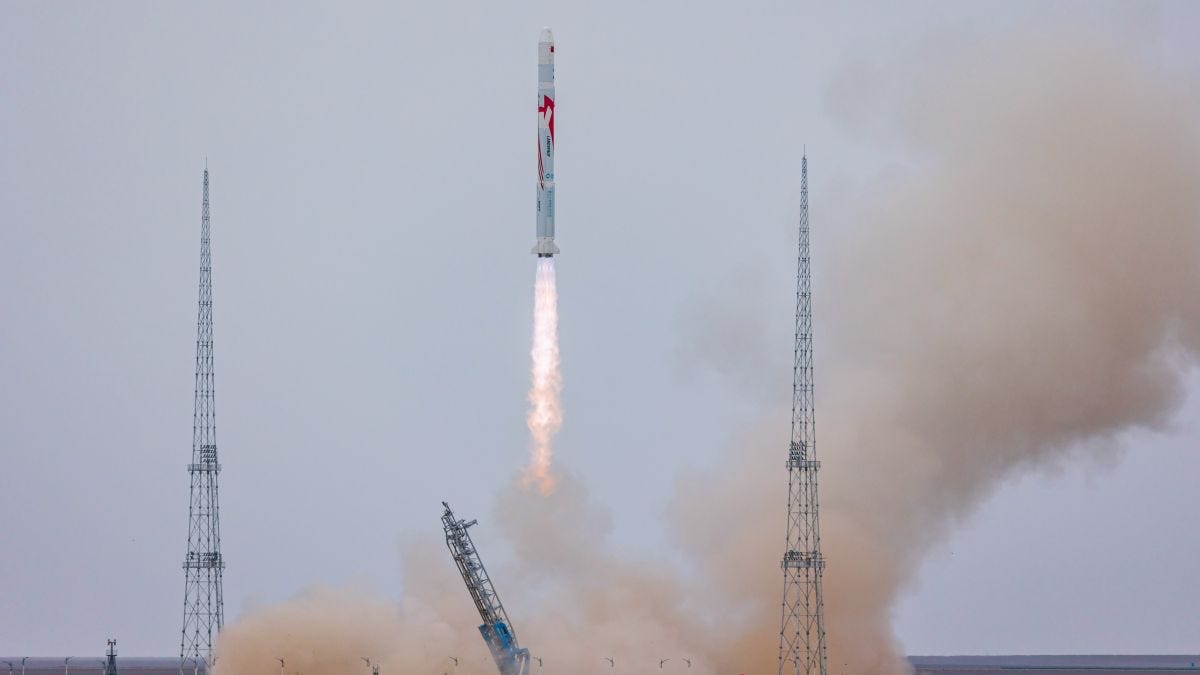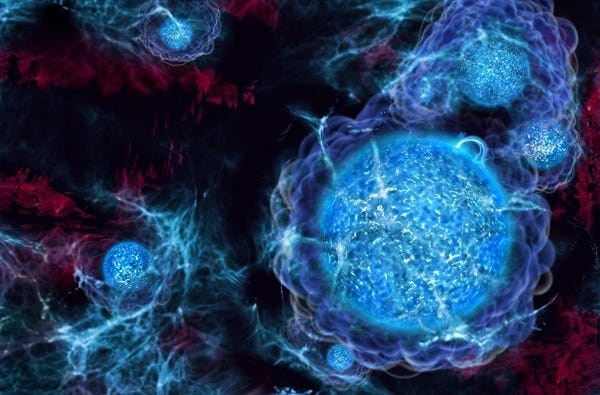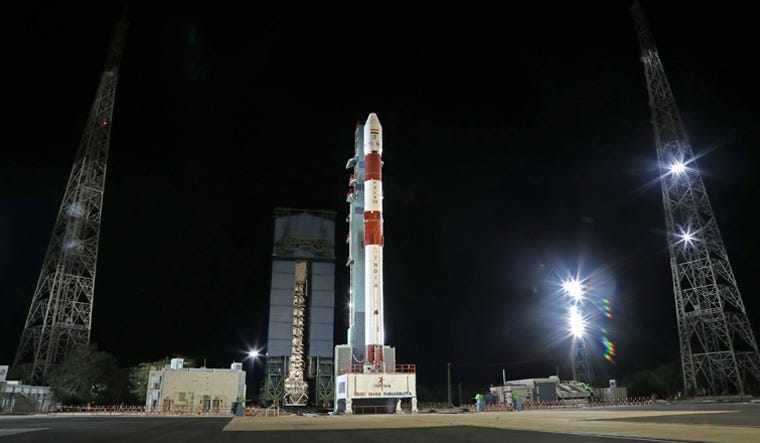Webb finds farthest supermassive blackhole ever
The James Webb Space Telescope (JWST) discovered the farthest supermassive blackhole ever. The new black hole is located in a galaxy called CEERS 1019 (previously known as EGSY8p7) located around 13.2 billion light years away. The black hole is so old that experts believe it may have existed when the universe was just 570 million years old.
Chandrayaan 3 launched successfully
Last month, ISRO’s Chandrayaan 3 moon mission was successfully launched into outer space onboard the LVM-3 rocket. The mission consists of a lander (Vikram) and a rover (Pragyan). The mission is expected to help us understand a lot about the moon like its environment, history, and geology. While the mission has been launched into space, it will take 40 days to land on the moon. This is a major event for not just India but the entire world because if it lands successfully, it will make India a part of the only 4 countries in the world to land a rover on the moon including the United States, the former Soviet Union, and China.
World’s first methane rocket launched successfully
This July, the China National Space Administration (CNSA) successfully launched its new methane rocket into orbit. Unlike regular rockets, the new rocket called Zhuque-2 uses methane as a fuel source instead of liquid hydrogen which is used in common rockets. This makes it cost-effective, more environmentally friendly, and easy to store. This is the first time a methane-powered rocket is entering outer space.
Webb finds first-ever dark stars
The James Webb telescope recently spotted 3 strange bright objects 13 billion light years away from the Earth. These stars are believed to be the oldest objects ever observed as they existed when the universe was merely 320 million years old. That’s not all. After a lot of studies, experts believe that these mysterious objects might be “dark stars”. Dark stars are hypothetical objects that might have formed in the early universe through the collapse of dark matter (a substance that makes up 85% of the universe but is tricky to observe as it does not react with light). If these new objects are in fact dark stars and made of dark matter, it could be the first time anyone has detected dark matter and could advance our understanding of science more than anything else.
ISRO launches 7 Singaporean satellites
The Indian Space Research Organization (ISRO) launched 7 more of Singapore’s satellites today. The main payload is a satellite called the DS-SAR. The satellite is a sophisticated imaging satellite equipped with Synthetic Aperture Radar or SAR (an instrument that creates detailed images by emitting microwave pulses and recording their reflection). The sattelites were put in orbit by ISRO’s a PSLV-C56 rocket. The unique part of the launch is that after putting the satellites in orbit, the rocket is going to use its leftover thrusters to put itself into a lower orbit so as to decrease its orbit time so that it can fall back to Earth instead of becoming space debris.


